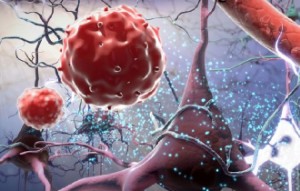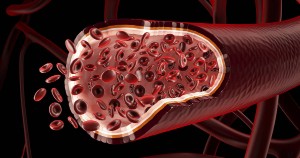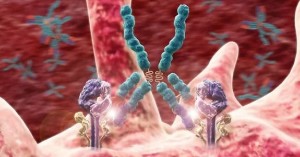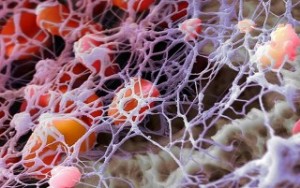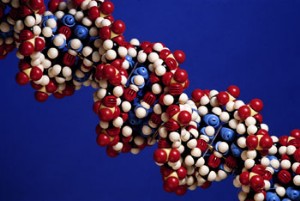Diet rules for elevated levels of uric acid in the blood and 8 healthy foods
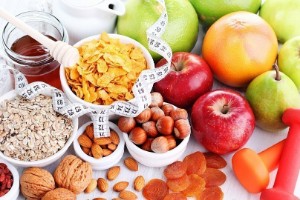 Uric acid is a product of the metabolic metabolism of purines in the human body, is synthesized in the liver, then enters the bloodstream. There, the acid combines with carbon dioxide, and then is excreted together with urine as the final product of metabolism.
Uric acid is a product of the metabolic metabolism of purines in the human body, is synthesized in the liver, then enters the bloodstream. There, the acid combines with carbon dioxide, and then is excreted together with urine as the final product of metabolism.
At an excessive level, it can cause gout, since this may increase the concentration of sodium in the body, which, upon contact with uric acid, forms sodium urate (it is in the form of salts that is deposited in joints, in kidneys, in the bladder in the form of stones).
What determines its level in the body? According to the conducted research , among other things, the amount of urea in the blood is significantly influenced by a person's daily diet.
In this article, we will discuss an effective diet to lower its levels. Let's discuss other proven methods of reducing the amount of uric acid in the body.
Recall that earlier we considered 20 products for cleansing blood vessels .
Content
What affects the amount of urea in the body?
The level of urea in the body is constantly rising and falling. It depends directly on the diet, time of day and physical activity. Since uric acid is formed from purines, it is products with their high content that increase its level.
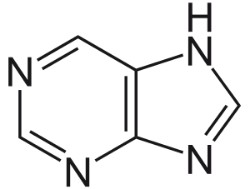 What are purines? These are protein–based substances found in almost all food products, mainly of animal origin (including seafood).
What are purines? These are protein–based substances found in almost all food products, mainly of animal origin (including seafood).
The daily intake of purines for an adult is from 600 to 1000 milligrams (depending on age, body needs, weight).
Indirectly, the level of uric acid is also affected by:
- The water-salt balance in the body;
- The balance of potassium and sodium in the blood;
- Functionality of the liver, kidneys, digestive and endocrine systems.
Now doctors can evaluate the work of the urethra, in particular the kidneys, by the concentration of uric acid in the blood. An overestimated level of urea often indicates kidney failure, the presence of concretions in the kidneys.
Signs of elevated levels
With constantly elevated uric acid in the blood, it is very common the following diseases and symptoms develop :
- Arthritis, rheumatism;
- Urolithiasis;
- Atherosclerosis (against the background of a violation of the balance of plasma nutrients and the accumulation of excess metabolic end products in it);
- Eczema, psoriasis;
- Acidosis (against the background of metabolic disorders).
Doctors also claim that excessive uric acid levels can become a primary factor in the development of certain oncological pathologies. In the initial stages, the increased rate is often accompanied by signs of mild allergies (with a rash on the body).
Nutrition rules for lowering it
The easiest way to reduce the concentration of uric acid in the blood is to follow the following recommendations (doctors also point to them):
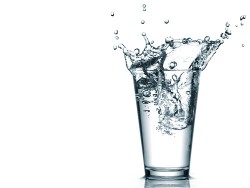
- Minimizing foods in a diet with a high protein content;
- Copious drinking, about 1.5 – 2.5 liters per day;
- Preference for plant foods over meat;
- Taking vitamin complexes, with a so-called "therapeutic" dose of potassium - it inhibits the accumulation of sodium compounds, including urates;
- Exclusion of foods rich in purines and oxalic acid from the diet;
- Exclusion of alcoholic beverages (and all others containing ethyl alcohol) from the diet;
- Periodically (2-3 times a month) observe the so–called "fasting" days, during which moderate fasting and refusal of food of animal origin are maintained;
- The inclusion of freshly squeezed fruit and vegetable juices in the diet – they perfectly help in the work of the urinary system, therefore they prevent kidney failure, urolithiasis and gout.
8 products that reduce uric acid in the blood
Foods low in protein and purines will help lower uric acid levels in the blood. These include:

- Fermented dairy products. Most of them, although they contain a considerable amount of proteins that reduce the level of urea and creatinine in the blood, and are extremely active. It is better to use milk or kefir. However, we should not forget that milk thickens the blood .
- Low-fat meats. Are rich in protein, but there are not so many purines. Ideally, chicken, turkey, rabbit meat will fit into this category.
- Seafood. Fish meat, as well as caviar, contains unsaturated omega-3, omega-6 and omega-9 fatty acids. They stimulate intercellular metabolic processes, including the removal of uric acid from the blood.
- Vegetables and fruits. Absolutely everything helps to normalize the balance of uric acid. The only exception is greens (which contain a large amount of oxalic acid). At the same time, vegetables and fruits are a natural source of fiber, which the body needs to normalize all digestive processes, fluid retention in the intestinal cavity. It is better to use them fresh, without thermal cooking.
- Dried fruits. The exception is raisins. Purines contain a minimum of vitamins, minerals and other nutrients – much more than in animal products. Also dried fruits thin the blood .
- Vegetable oils. Mostly consist of fat and water, proteins and purines are completely absent there. To normalize the blood composition, doctors recommend giving preference to olive and linseed oils.
- Spices. It is especially useful to include dill, parsley, ginger, turmeric, paprika (in powder form), pepper in the diet.
- Almost any liquid. It is better to use water, compotes, freshly squeezed juices (not necessarily concentrated), jelly, not strong tea. Purines are absent in them, but the liquid is used in the work of the kidneys, through which uric acid is excreted.
We recommend you to familiarize yourself with this table of products and rules for their use:
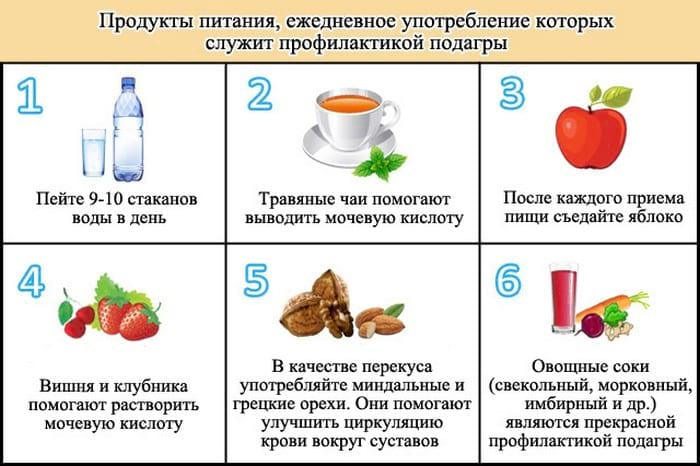
What should be avoided?
The following products have a very high purine content. With high uric acid, they should be abandoned first of all:

- Beef. There are about 400 mg of purines per 100 grams and even more. For example, in the thymus gland (meat from the neck), the level reaches 600 mg per 100 grams of fresh meat. And purines, by the way, are not destroyed during heat treatment. Pork is only slightly inferior in "harmfulness" to beef.
- Beer. Extremely "dangerous" product. In addition to alcohol, it contains brewer's yeast. And their purines are almost 2 times higher than in beef. In addition to this, beer stimulates urination, in which potassium is actively washed out of the body, but the concentration of sodium, on the contrary, increases.
- Mushrooms. are also rich in purines, in their biochemical composition they represent something between vegetables and meat. Dried porcini mushrooms are especially "harmful" with an excess of uric acid in the blood.
- Fish in oil. Smoked fish should also be included here. After processing, the content of unsaturated fatty acids in them decreases, but purines do not go away. Accordingly, it is better to refuse sprats in tomato sauce or tuna in white marinade. Such products contain much less purines than in beef or pork, but still quite a lot.
- Animal by-products. These include the lungs, kidneys, liver, and spleen. They contain large amounts of purines and sodium. And since these products are most often used as ingredients in the production of sausages, they should also be discarded.
- Baking yeast. Accordingly, pastries, which are also prepared with yeast, should also be excluded from the diet. Instead of bread, it is better to use corn tortillas, and baked.
Table
Also check out the purine content in food in the table:
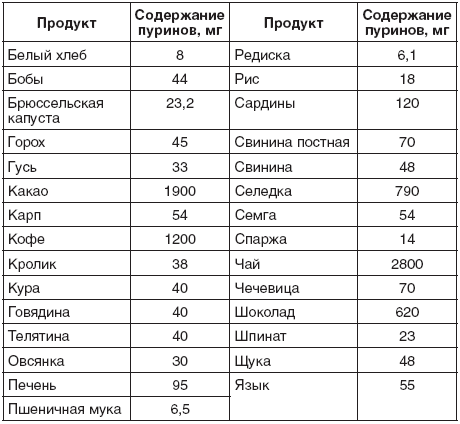
Uric acid is produced by the body itself, it occurs in the liver. Therefore, it is not always the diet that affects its final level in the body. Some endocrine diseases can disrupt metabolic processes involving carbohydrates and fats. And that's when the body actively transforms proteins to the same fatty acids, amino acids. This is also accompanied by an increase in urea levels.
Sample menu for the week
The diet should be made by a nutritionist, taking into account the weight and other physiological parameters of the patient. But the approximate menu for the week looks like this:

- Monday. Breakfast – milk and toast with jam or honey. Lunch – fried potatoes in olive or linseed oil, vegetable soup, preferably with fresh cabbage. Dinner is a vegetable stew, you can have it with fish.
- Tuesday. Breakfast – cheesecakes with cottage cheese, tea with lemon or orange. Lunch – vegetable soup and cabbage rolls, but without meat (so-called "vegetarian" cabbage rolls with zucchini). Dinner – vinaigrette, sandwich with cheese (use a flatbread instead of bread).
- Wednesday. Breakfast – cottage cheese with sour cream, fruits or dried fruits. Lunch is cheese soup with chicken. Dinner – vegetable stew, fruit salad and compote.
- Thursday. Breakfast – omelet with herbs, onions and garlic, you can have tomatoes. Lunch is vegetable okroshka, you can have chicken breast. Dinner – potatoes with vegetables, tea with lemon.
- Friday. Breakfast – soft-boiled egg, cottage cheese with fruit. Lunch – buckwheat soup and boiled fish fillet (baked, with vegetable oil). Dinner – vegetable salad and cheese slicing (without smoked and rennet cheese).
- Saturday. Breakfast – pancakes with jam. Lunch – noodles and potato casserole, you can stew potatoes, but without meat. Dinner – vegetable salad with sour cream, cheese and olives.
- Sunday. Breakfast – oatmeal with milk, as well as freshly squeezed carrot juice. Lunch – fried potatoes with sour cream. Dinner – dumplings with cottage cheese or cabbage (at your discretion).
You can add afternoon snacks to the menu, they should mainly consist of fermented dairy products, fresh fruits, vegetables, dried fruits.
Proven folk methods
In folk medicine, there are remedies that will help speed up the removal of uric acid from the body. According to reviews, the most effective among them are the following:

- Decoction from the husk of bean pods. 1 tablespoon of such husk is poured with 1 liter of water, boiled for 2 hours in a closed container. After cooling, strain and take 1 teaspoon 3 times a day. The course is until the end of the prepared remedy.
- Decoction of lingonberry leaves. 20 grams of grated fresh leaves are poured with a glass of boiling water, infused for 20-25 minutes. Next, you can add sugar or honey to taste. Drink it like regular tea. It is recommended to drink 2 glasses of this decoction daily.
- A mixture of chamomile, sage and calendula. The dry vegetable mixture is mixed in equal proportions. 200 grams of such is poured with 1.5 liters of boiling water, insist until it cools down. Next, strain, The resulting infusion is used for warm foot baths (daily for 3-4 weeks).
- Apple jelly. Dried apple slices are used for its preparation. About 50 grams of these are poured with a glass of boiling water, the dishes are necessarily covered and wrapped in a thick towel. Insist all night. In the morning, you will get a rather thick jelly, which tastes like jam. Eat everything, including dried fruits, with breakfast.
The above folk methods that reduce uric acid in the blood should be used only after consulting with your doctor. For example, in case of kidney failure, the same apple jelly may be contraindicated. A decoction of bean husks is not recommended for gastritis or peptic ulcer of the stomach, duodenum.
6 more important recommendations
If for some reason the patient cannot follow a specialized diet, then in order to reduce uric acid in the blood, he can adhere to the following dietary recommendations:
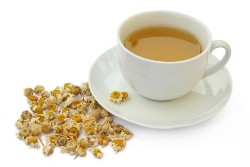
- Fractional nutrition. You should eat as often as possible, but in very small portions. The food itself can be pre–crushed to a puree state - this will accelerate metabolism and the removal of uric acid from the blood.
- Normalize weight. Overweight significantly slows down the process of uric acid withdrawal.
- Include "diuretic" foods in the diet. The most popular and affordable of these are chamomile tea, as well as watermelon. This advice will also help to avoid the formation of kidney stones in the joints.
- Regular physical activity. Help to accelerate the removal of uric acid, accelerate metabolic processes with purines. This means that immediately after exercise, the level increases, but after 30-60 minutes it decreases (relative to the level of urea that was before physical exertion).
- Periodic fasting for 24-36 hours, no more. If a person does not consume food, the body does not receive purines. Accordingly, uric acid is not synthesized in the liver. Nutritionists recommend fasting for at least 2 days a month.
- Avoid low-calorie diets. In most cases, protein products form the basis of their diet. And these are lean meat, peanuts, cottage cheese.
Useful video
We offer to view these videos:
;
Conclusion
By the way, according to WHO (World Health Organization) statistics, elevated uric acid levels are observed in about 60% of the adult population. Even more among the elderly, reaching 85-90%.
And the main reason for this is the unhealthy diet of modern man, which is dominated by food of animal origin with very high calories, as well as carbohydrate-rich foods. For example, in the 19th century (and even at the beginning of the 20th), the diet of absolutely everyone consisted mainly of plant foods.

